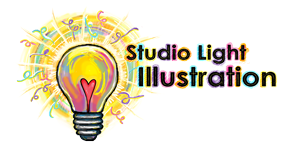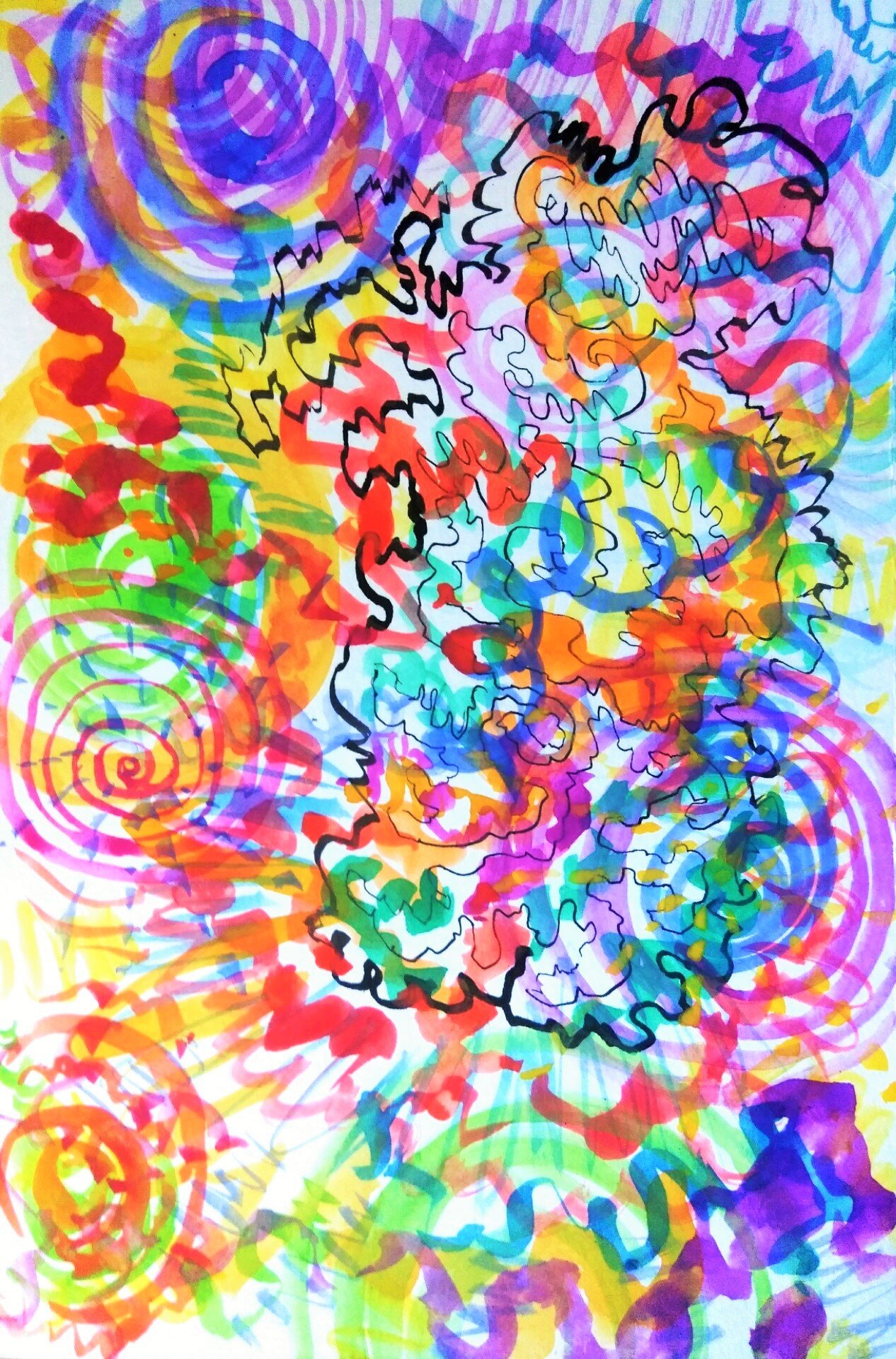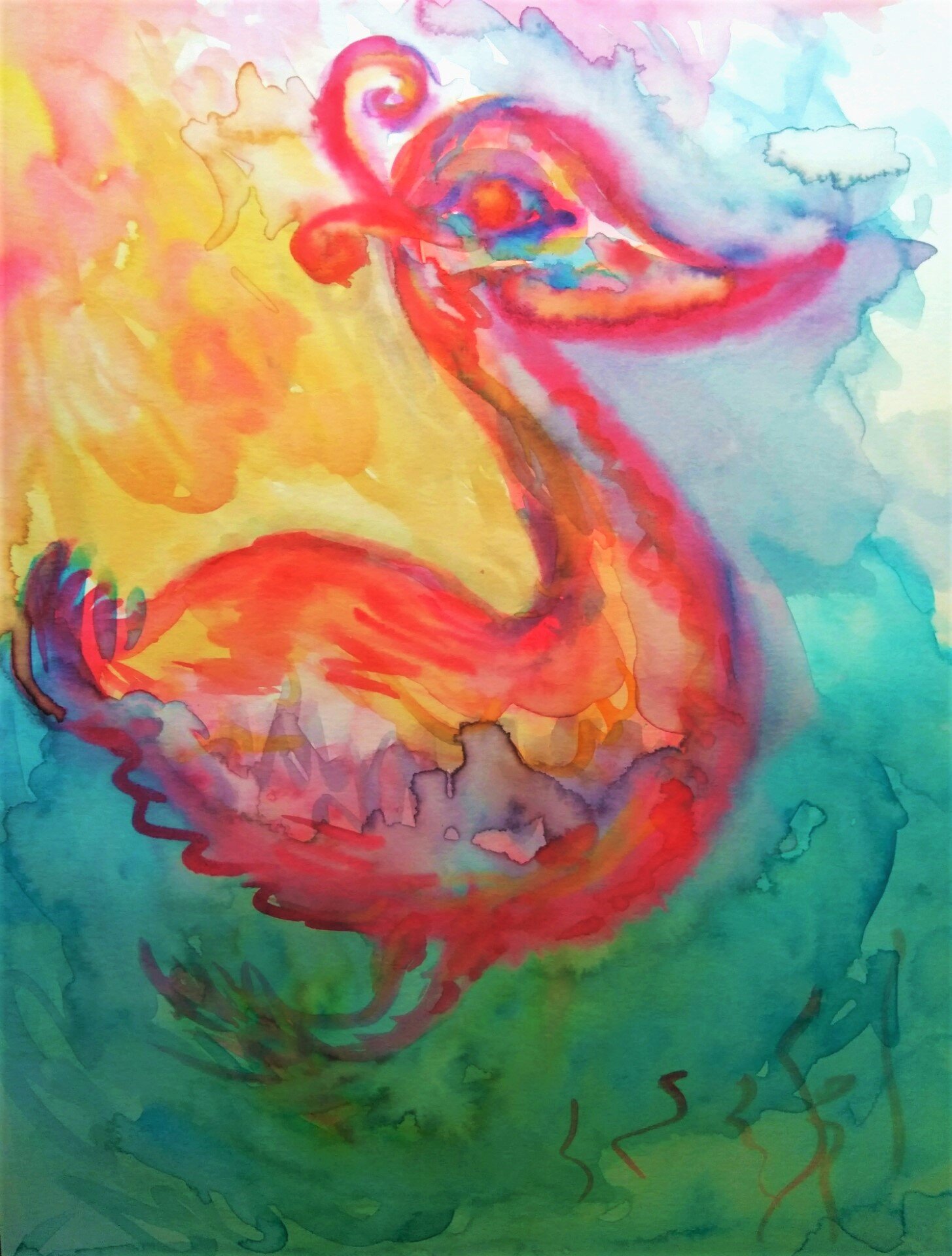Reflection and Artwork by Sebila Kratovac
There is nothing so frightening yet full of possibilities than a blank page. We have all been there. I believe that we are born with the ability to create freely and abundantly but, as we grow up, we learn that things should not come so easily to us and that we have to work very hard to create anything worthwhile. Resistance creeps in and we manifest the pain that we originally believed was necessary to create what we desire. Inspiration, which is available to us as the air we breathe, seems to be in short supply and only accessible to “true artists.”
Creatives often find themselves in a situation where their passion is to make art but inspiration doesn’t always show up when they wish to create. They feel guilty, overwhelmed, and stressed out, an emotional space that can easily lead to a self-sabotaging downward spiral. Kendyll Hillegas, a freelance illustrator, talks about her struggle to keep inspired in her YouTube video The Truth About Inspiration for Artists and Illustrators. She believes that inspiration comes once we commit to a particular creative practice through all the trials and tribulations that can come with resistance. This period of testing our commitment is crucial to finding our true passion. If we find that we cannot stick with something through completion, we are then free to explore different ways to create or even completely change our direction in life.
Breaking through resistance and letting inspiration flow is not an easy endeavor, even when we fully commit to pursuing our passion. To complicate matters even more, resistance seems to be proportional to how much we love the work we do. In his must-read book The War of Art, dealing with ways to conquer resistance, Steven Pressfield writes that “the more Resistance you experience, the more important your unmanifested art/project/enterprise is to you - and the more gratification you will feel when you finally do it.” Where does this blockage to inspiration come from? Sometimes we are resistant because of perfectionism or pressure we put on ourselves to create in a particular way. In Hillegas’ case, she resisted her art practice because of pressure she put on herself to draw realistically. But, with constantly asking herself “Is this what I really am interested in and passionate about?” she found that the blood, sweat, and tears she put into her artwork were worth it. After that first breakthrough, Hillegas felt inspired to continue with realistic drawing, feeling more joyful and excited to see how she can improve her drawings with more experience.
As Pressfield puts it, by committing to creating something we love, we have earned favor of the muses and are now magnetized to attract synchronicities, guidance, mentors, insights, and ideas to help us get inspired. So, what are some of the ways that we can open up to inspiration? One way to get inspired is to bypass the brain circuits which we usually employ when we are attempting to create. For example, we can write down poems or stream-of-consciousness thoughts, draw or sculpt, or even brush our teeth using our non-dominant hand. As we are creating new brain circuits, we are also strengthening communication between the left and right brain hemispheres. Another way to trick our brain to welcome inspiration is to switch our tasks drastically. Instead of sitting frustrated at our desk, we can go out for a walk, prepare a delicious meal, or watch comedy skits for an hour. Connecting with others – going for a coffee with a friend, playing with our pets, spending time with loved ones – has the power to shift our mind from contraction to expansion. Movement, especially freestyle movement, can prepare our body and mind for inspiration. Yoga, sports, dancing, walking, and any other forms of movement increase the flow of energy and oxygen throughout the body and make us feel more embodied, grounded, and present. We feel that we can take up space and create, that our actions can impact something out there in the world. Far from distractions, these exercises are meant to save us time and energy we spend on resistance so we can get to the fun stuff.
For some people, bringing their mind and body into a relaxed state can be the most effective way to release resistance. Taking a bath, listening to soothing music, going to a sound healing class, having a hypnotherapy session, trying yin/restorative yoga and yoga nidra, and starting to meditate with binaural beats can bring the brain into the alpha and theta wave states of deep relaxation, priming us for receiving inspiration. And for an even deeper state of relaxation, how about taking a nap? Getting our brain to the delta wave state during sleep, gives us access to our subconscious through our dreams. Paying attention to our dreams can be a huge gold mine for inspiration. To go even further, exploring lucid dreaming (a dream state in which we are aware that we are dreaming and are able to influence the dream) can help us see that we have the power to create our own reality and that there is nothing that can stop us from creating anything we want.
When nothing else works, all we can do is surrender to the fact that we are not in a place to be inspired. As Hillegas advises, we can give ourselves some time and space to come back to this journey of creating. In her channeling work through Abraham, Esther Hicks talks about how each morning is a new opportunity to live our best life. When we are in that zero-point neutral state, before any negative thought enters our mind, everything is possible, even letting go of resistance. Coming to terms with how we are feeling, we can then move on with our day, wake up the next day refreshed, and start over anew.














